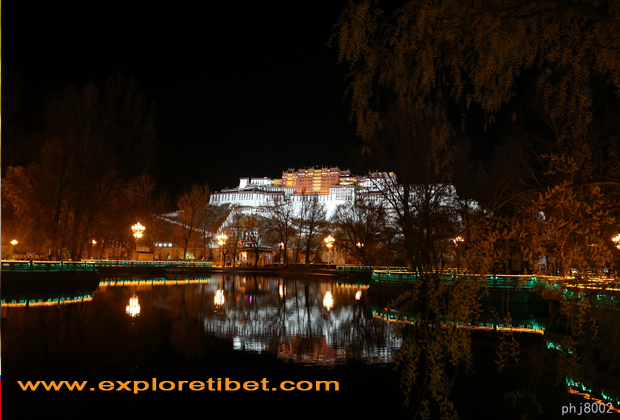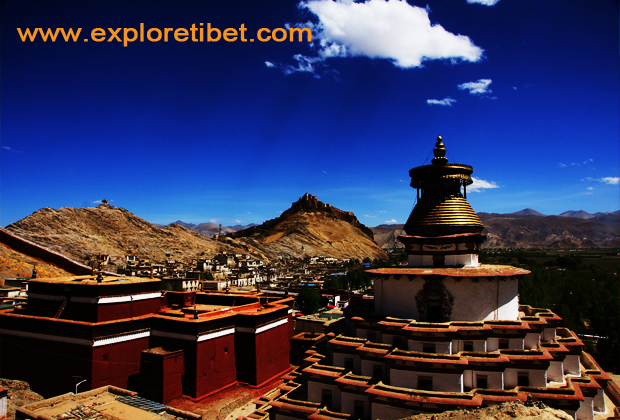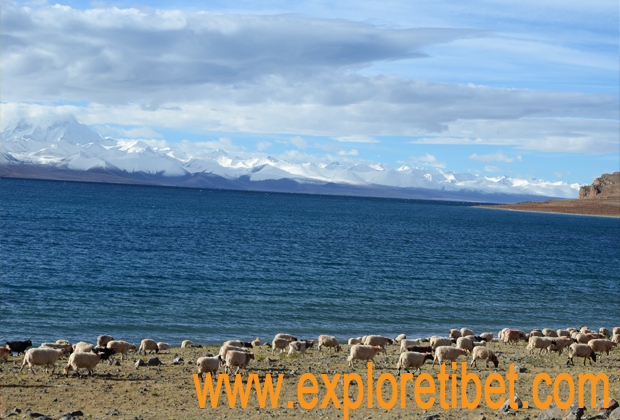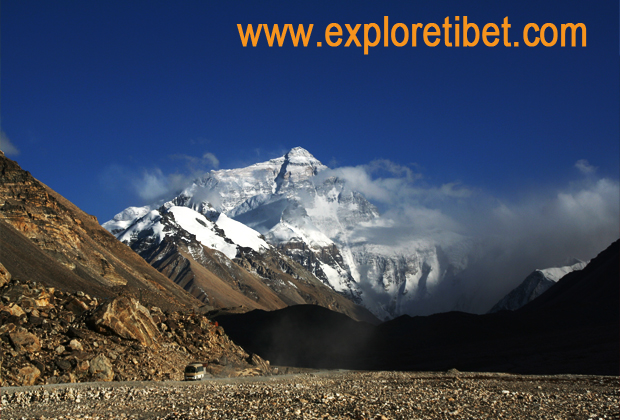Losar, the Tibetan New Year is over, and the region is looking forward to preparing for the opening of tourism once again. As spring presses onwards and the weather gets warmer, the Tibet Autonomous Region normally starts to prepare for the influx of international tourists that will soon be crossing the boundaries and borders and crowding the monasteries, temples, and streets of this high-altitude plateau land. As the Covid-19 epidemic hit the whole world after the start of the year, we are going to travel Tibet online during the 2020 tourism season, in the Year of the Rat.
Where are the best sights in 2020?
Tibet is a vast region lying on the huge Qinghai-Tibet Plateau. Ringed by the mighty Himalayas on two sides, the Taklamakan Desert to the north, and the rest of China to the east, this ancient land is one of the most outstanding places in the world to visit. With a massive repertoire of attractions to see and experience, from high mountains and blue lakes to ancient temples and ruined cities, the Roof of the World has something for everyone.
Lhasa
Renowned as the ancient capital of the Tibetan Empire, the beautiful City of Sunshine, and the center of Tibetan religion and culture which makes the Lhasa tour very special, Lhasa is one of the most impressive cities in the world. Listed as the highest capital city on the planet, Lhasa is a major tourist center in Tibet, and a must-visit location. The stunning sights of this wondrous city include the iconic Potala Palace, the sacred Jokhang Temple, the famed Norbulingka with its beautiful gardens, and any number of monasteries, nunneries, hermitage sites, and meditation caves. And this is one of the few places in Tibet where you can perform the ritual kora around the most sacred temple in Tibet alongside true Tibetan pilgrims. The infamous Barkhor Street, which circles the Jokhang Temple, is one of the most amazing kora routes in the world, and favored by pilgrims from across the plateau.

Potala Palace-Lhasa
Shigatse
The second city of Tibet, Shigatse is well known for its unique monastery, the Tashilhunpo Monastery, which lies just outside the city itself and is a great place to take a . It was founded in 1447 by the first Dalai Lama (retroactive) – who was one of the disciples of Je Tsongkhapa, the founder of the Gelug School of Tibetan Buddhism – the monastery has since been the traditional seat of the Panchen Lama, Tibet’s second highest Buddhist incarnation.
The city lies on the Nyang River, just to the south of the long Yarlung Tsangpo River, which runs across the entire plateau from its source to the southeast of Mount Kailash in the far northwest of Tibet. Shigatse is also home to the Chinese side of the world’s highest mountain, Mount Everest, which lies on the western border with Nepal.
Gyantse
Once the largest town in Tibet, Gyantse is now a town located in the Shigatse City, to the southeast of Shigatse center. Once the home to wealthy Tibetan noble families, the town is now more famous for its unique attraction inside the Pelkor Chode Monastery. As well as being one of the few places in Tibet that still has a Dzong or fortress, Gyantse is renowned for its unique Kumbum Stupa, which is the only one of its kind on the plateau. Standing 32 meters tall and consisting of 108 chapels over nine levels, this amazing structure is designed to portray the three-dimensional image of the Buddhist Cosmos.

Pelkor Chode-Gyantse
Lake Yamdrok
Lying just to the southwest of Lhasa, Lake Yamdrok is well known as one of the Great Three Sacred Lakes of Tibet, along with Lake Namtso and Lake Manasarovar. This beautiful turquoise lake stretches out for miles across the area of Shannan in which it lies, and is believed to be the nine lakes of the cradle of Tibetan civilization conjoined by a goddess. Said to be part of the life-spirit of Tibet, and the life-blood of the Tibetan people, it is widely believed that, if the lake should dry up, the entire plateau would become uninhabitable.
Lake Namtso
Lying to the north of Lhasa, on the boundary with Nagqu City, lies the stunning Heavenly Lake, Lake Namtso. Sitting at an altitude of around 4,718 meters above sea level, the lake is the largest in Tibet, and the second largest in China, and contains five uninhabited islands. Situated as it is, between the Nyenchen Tanglha Mountains and the vast open prairies of the Changtang Grasslands, this high lake was once privy to hermits who would walk across the ice of the lake to spend the summer in meditation on the islands. These hermits would have to wait until the lake froze over once more to return to dry land.

Namtso Lake
Mount Qomolangnma
Renowned around the globe, this vast peak is the highest mountain in the world, and its summit is the highest point of land on the planet. The mountain lies directly on the border between China and Nepal, with the border line crossing exactly over the summit. However, the famous Everest Base Camp (EBC) is the closest anyone traveling as a tourist can get to this high peak, which lies at the end of a long drive over paved roads all the way from Lhasa, 600 kilometers to the east. The first base camp to be set up at the foot of the mountain is now out of bounds to tourists, with a new tourist base camp now set up a few kilometers back, to preserve the delicate environment of this beautiful region of the world, still millions of visitors every year takes EBC Trekking during the Tibet tours in Tibet.

Mt Qomolangma
Mount Kailash
Lying in the farthest reaches of Tibet, in Ngari Prefecture to the far northwest of the region, Mount Kailash is renowned as the world’s most sacred mountain, Held in reverence in four religions – Hinduism, Buddhism, Jainism, and Bon – the mountain is said to be the earthly representation of the legendary Mount Meru at the center of the universe. For Hindus, it is the home of Lord Shiva and his wife, Parvati. In Tibet, the mountain is known as Gang Rinpoche, or "precious jewel of snows", and has its place in many Tibetan legends. Thus, Mount Kailash Tours is dream tour not only for the international tourists, but also to the native pilgrims in Tibet.
Unclimbed by mortal feet (Milarepa does not count as he flew to the top on a ray of sunlight), the pyramid-shaped mountain is ultimately holy, and will never be climbed. However, you can walk the ritual kora path around the mountain, which takes three days of arduous hiking, but is one of the most popular treks in Tibet. And you can join the many Buddhist and Hindu pilgrims that make this journey every day of the year, though the best time is during the Saga Dawa Festival in June.
So, in short, you can join with any of this festival to make your Tibet Tours more authentic and to explore the real experience of ancient culture and spiritual festival in Tibet.